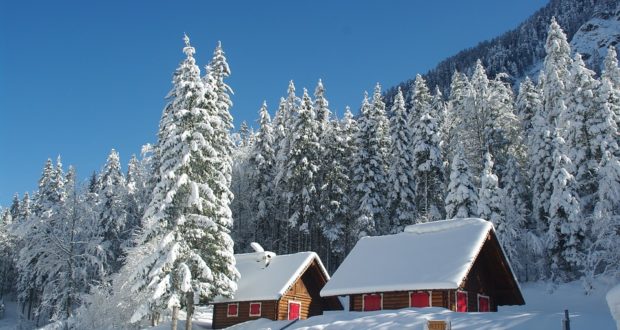Products You May Like

Homestead in winter time
Chances are that if you’re reading this, then you’re probably acutely aware of just how tough it can be on the homestead in winter.
It’s not long after the winter solstice that the temps begin to plummet. Creating a perfect storm for situations on the homestead to deteriorate. After all, February’s full moon is known as the “Trapper’s Moon.” Named for the fact that, like the snow, beaver pelts are at their thickest. Beavers have had to adapt this capability. Perhaps with the knowledge that this is essential for maximizing their survival in extremely low temps.
Of course, if there ever were a perfect animal to model our own homesteading practices after, then it would have to be nature’s greatest homesteader: the beaver.
Skills to make life on the homestead In winter a little easier
1. Please, remember: timing is everything
When it comes to surviving a winter on the homestead, one of the most important challenges to overcome is to see beyond the obvious ones. Especially since the cold is something we’re all quite familiar with. If anything, this skill is one that keeps us one step ahead of the challenges.
Timing is everything, especially due to how the daylight drains away quickly. Not only that, but because colder temps often give way to rapid-moving high-pressure zones, the weather can change even faster. For this reason, it’s critical to keep tabs on the following:
- Make sure you are able to read the clouds to detect potential changes in weather. So you’re not caught completely off-guard if you must prepare for a fast-approaching blizzard. For more information, check out our recent article, Survival 101: How to Forecast Tomorrow’s Weather Without the Weather Channel
- Since winter brings low-light conditions early in the day, it’s important to provide lighting in as many places around the homestead as possible. Predators aren’t fond of them, and they simply keep us safer from injury and disorientation.
- Additionally, I recommend an EDC (everyday carry) kit that rides along with you. This will buy you additional time if you find yourself in a winter survival scenario and possibly require rescue.
Affordable Hand Held Solar Generator Provides Dependable Backup Power
2. Dress (and sew) for success
You’re probably not surprised about just how critical warm clothing can be this time of year. However, it’s important to know how to fix that clothing in a pinch. Knowing how to sew, along with having a kit that can meet the task at hand, could be invaluable.

Winter time on the homestead
It’s not uncommon for homesteaders to find themselves snowed in, largely cut off from access to populated areas, meaning that your best work coat is only as warm as the quality of its patches. With that being said, it’s important to invest in clothing and winter apparel that maintains insulating properties even while moderately moist or damp, such as wool and certain synthetics. Cotton, however, will lose all insulating properties when wet, so it’s best to stick with the tried-and-true materials (and not end up with frostbite).
3. Stay healthy
The cold is downright brutal on the body, especially for immune systems, since our metabolism must work harder to maintain body temps. So, it’s smart to keep your medicine cabinet well-stocked with the usual sick-fixes and your mind well-stocked with at least basic medicinal skills. Not to mention, the cold also can make for far-more-difficult muscle movements, impairing motor skills in the process.
So be sure to keep your walkways — along with those of your livestock — clear of ice and snow. Broken bones and torn tendons tend to make life A LOT more difficult for everybody.
4. Be efficient with your heat
Heat is, perhaps, the most coveted commodity on the winter homestead. You need to be able to generate it cheaply and hold on to as much of it as possible. Becoming knowledgeable about heat efficiency would greatly reduce your burden to chop wood and shovel pellets. For this, I’d recommend purchasing an IR camera to identify problem spots where heat may be leaking out your cabin. You’ll be able to pinpoint exactly where to apply a can of insulating foam in the most scientifically efficient way.
In a previous post we discussed how to build your own water heater, running on nothing but the heat generated by your homestead’s compost pile. Not only can this system achieve higher temps than most residential water heaters, but you’re also using zero electricity in order to keep it working. Get good at thinking up designs and innovating your infrastructure on heat conservation. You’ll spend far less time and energy trying to keep everybody (including your water supply) toasty warm.

